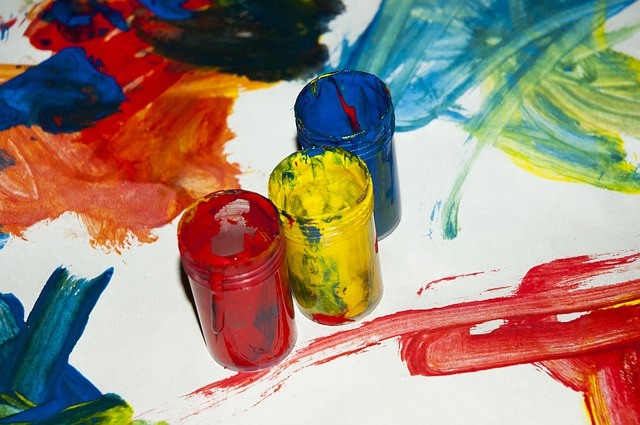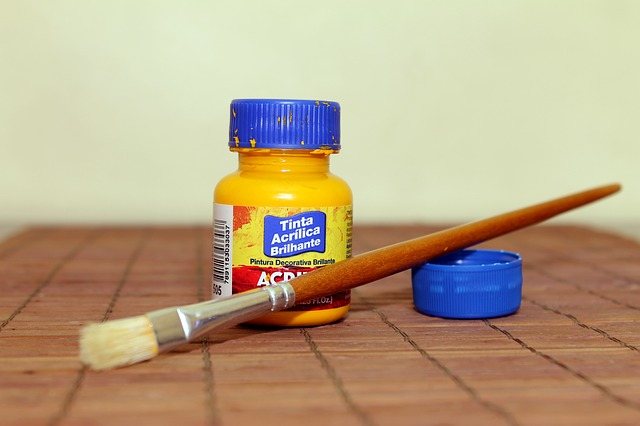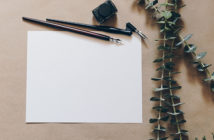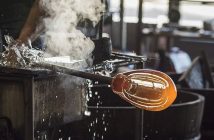The painting medium is one that allows for beautiful shading, bright colors, and interesting patterns that ultimately create a gorgeous picture.
There are a wide variety of paints that offer different textures and consistencies, with some being thicker and better for layering, while others are best designed for being mixed with water and making very light color additions to the work.
This article will cover a more advanced form of watercolor: gouache!
Contents
What Is Gouache?
Less common than the standard watercolor or acrylic paint, gouache is a multi-century old form of paint that has lost its popularity over time for one reason or another.
Pronounced “gwosh,” it is often described as an opaque watercolor, bearing similarities to both tempera paints and the standard watercolor that results in a very thin (yet also sturdy) paint that can hold up to others of the same type.
As for composition, it creates a lovely, velvety texture that, rather than reflecting light, absorbs it.
As far as the actual composition, it is often made of a high amount of colored pigment, gum arabic to bind it, and usually a solid white pigment like chalk.
In some mixtures, it is simply watercolor with chalk mixed in, but that is not always the case.
How to Use Gouache
As stated, gouache is neither watercolor, acrylic, nor is it tempera paint, but rather a combination of the three.
Using it directly out of the tube is not advised because of how thick it is and the graininess of the paste. You will want to start by mixing the paint into a workable consistency for what you need.
Start by mixing it with water until you have reached roughly the consistency of melted mayonnaise. Bit of a gross imagery, but accurate.
If adding full drops of water makes it difficult to obtain the right texture, you can try using a spray bottle. That way, you can add the water bit by bit and more easily manage how much you add.
Finally, in regards to water, gouache is water-soluble and water-permeable. Because of that, setting up a background with gouache can be difficult, as it can muddy the colors and ultimately cause many issues.
Techniques With Gouache
A useful feature of gouache is that you can paint opaque lines over opaque backgrounds, resulting in the ability to make extraordinarily detailed works.
While the paint will go on see-through, it will dry opaque. This will somewhat negate the possibility of muddied colors, provided you are sure to allow the paint to dry completely.
The most important thing to keep in mind is proper contrast; colors that complement each other like blue and red, green and purple, and so on and so forth.
Make sure they balance each other well, and your work is sure to be a success!
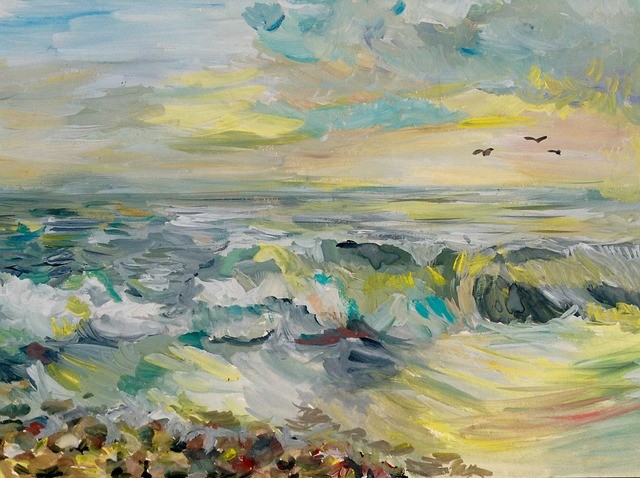
Bonus Technique: Scumbling
Although gouache is typically a smooth variety of paint, you may want to go for a more rough texture. If that is the case, you may choose to use a technique known as scumbling.
By leveraging a large, flat brush but no water, you spread out the paint, resulting in a rough, faded texture with gaps in the mix, letting the background show through and resulting in a vastly different texture than by mixing the paint with water.
More Tips for Gouache Painting
You will want to begin with a sturdy surface. Typically, because gouache is a water-based paint, it has a tendency to bleed through the paper and tear it.
As such, you will want a hardier variety such as water coloring paper, canvas board, or stretched canvas that can stand up to the paint.
It’s also recommended that you prime your surface as well, to avoid issues later on.
Cleaning Your Brushes
This is the easiest part of working with gouache: keeping your brushes clean. All it takes is to rinse your brushes, palettes, and other such materials under water to get rid of the pigment.
It is also advised to use soap with the brushes, or else risk them stiffening up and becoming nearly impossible to work with in the future.
Here’s a video showing some beginner instructions on gouache painting.
Conclusion
Gouache is a multi-century old medium for painting that has lost its popularity over time. It’s hard to keep up with trends, right?
Despite that, it is still a beautiful and versatile kind of paint that has a wide variety of uses, from smooth clean lines to rough, cloth-like textures.
It is able to do more than acrylic or tempera or even watercolor, and doesn’t feature the risk of staining that oil-based paints often carry.
The only problem, since it is water-based, is that it will bleed through most paper if it is not prepared correctly.
Ultimately, it is a wonderful medium that anyone can pick up and use to create incredible works of art.
Do you have any tips for gouache painting?

